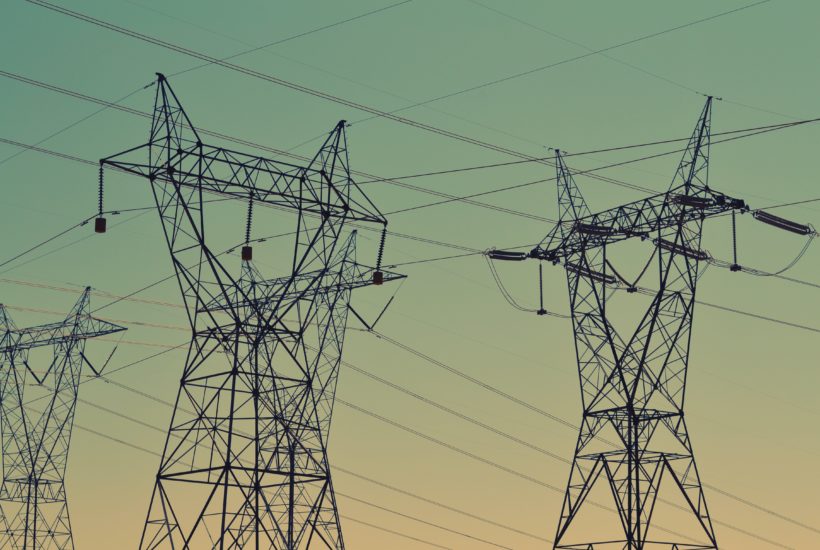Featured
Industrial Electricity Demand Falls More Than at the Beginning of the Pandemic in Spain
Industrial electricity demand fell by 2.3% during the first quarter of 2022 compared to the previous year, and even fell below the same period of time in 2020, marked by the pandemic. On average, the first quarter of the year closed with a year-on-year decline of around 3%, compared to the increase recorded in the previous quarter, with a slight acceleration in the services component and a significant deterioration in industry.

Industrial electricity demand fell by 2.3% during the first quarter of 2022 compared to the previous year, and even fell below the same period of time in 2020, marked by the pandemic, when economic activity was relegated to the bare essentials. The industrial standstill in March, together with the months of January and February, in which a certain business slowdown was already noticeable as a result of the price increases that had been accumulating over the last few periods, has been compounded by the additional impact generated by the Russian invasion of Ukraine.
Domestic electricity demand in March is estimated at 21,487 gigawatt hours, 1.5% lower than in the same month last year, according to official data provided by Red Eléctrica de España. In the first three months of 2022, demand is estimated at 64,339 gigawatt hours, an amount that translates into 2.3% less than in the same period of 2021, taking into account the calendar and temperatures.
These figures, as mentioned above, are lower than the data from last 2020, a year marked by the onset of the Covid-19 pandemic. Specifically, that year a total of 65,734 gigawatt hours were demanded, despite the fact that economic activity was almost at a standstill during the last fortnight of March.
If you want to read more about the importance of the industrial electricity demand and to find other important economic news from around the world, download for free our companion app. Born2Invest’s team of journalists gathers the most interesting business news in a single mobile application. It’s impossible to keep up with everything you’re interested in, but our companion app will help you keep track of the important news. Our app is being updated throughout the day.
Industrial activity conditions the evolution of the general index
There is no doubt that industrial activity continues to condition the evolution of the general index of large consumers, which has shown a profile of progressive deceleration since April last year. Thus, during the month of March, the process of deterioration of the interannual rates of the industrial component that has been registered since the beginning of the year has continued and where the intermediate industrial goods, weighed down by the cokeries and the metallurgical industries, present the greater relative deteriorations.
In the services components, on the other hand, the year-on-year increase continues after the sharp falls recorded during the months of confinement, although they also seem to have slightly felt the effects of the armed conflict that began at the end of February in Eastern Europe. In addition, road transport reflects the effects of the strike in recent weeks.
On average, the first quarter of the year closed with a year-on-year decline of around 3%, compared to the increase recorded in the previous quarter, with a slight acceleration in the services component and a significant deterioration in industry.
__
(Featured image by Fré Sonneveld via Unsplash)
DISCLAIMER: This article was written by a third party contributor and does not reflect the opinion of Born2Invest, its management, staff or its associates. Please review our disclaimer for more information.
This article may include forward-looking statements. These forward-looking statements generally are identified by the words “believe,” “project,” “estimate,” “become,” “plan,” “will,” and similar expressions. These forward-looking statements involve known and unknown risks as well as uncertainties, including those discussed in the following cautionary statements and elsewhere in this article and on this site. Although the Company may believe that its expectations are based on reasonable assumptions, the actual results that the Company may achieve may differ materially from any forward-looking statements, which reflect the opinions of the management of the Company only as of the date hereof. Additionally, please make sure to read these important disclosures.
First published in elEconomista.es, a third-party contributor translated and adapted the article from the original. In case of discrepancy, the original will prevail.
Although we made reasonable efforts to provide accurate translations, some parts may be incorrect. Born2Invest assumes no responsibility for errors, omissions or ambiguities in the translations provided on this website. Any person or entity relying on translated content does so at their own risk. Born2Invest is not responsible for losses caused by such reliance on the accuracy or reliability of translated information. If you wish to report an error or inaccuracy in the translation, we encourage you to contact us.

-

 Impact Investing1 week ago
Impact Investing1 week agoTreeblock Showcases Sustainability Solutions at ADIPEC Abu Dhabi
-

 Impact Investing5 days ago
Impact Investing5 days agoHigh Awareness, Low Adoption: The VSME Challenge for European SMEs
-

 Fintech2 weeks ago
Fintech2 weeks agoItaly Issues First Natively Tokenized Minibond on Public Blockchain
-

 Fintech1 week ago
Fintech1 week agoN26 Hires UBS Executive to Lead Turnaround Amid Regulatory Pressure















